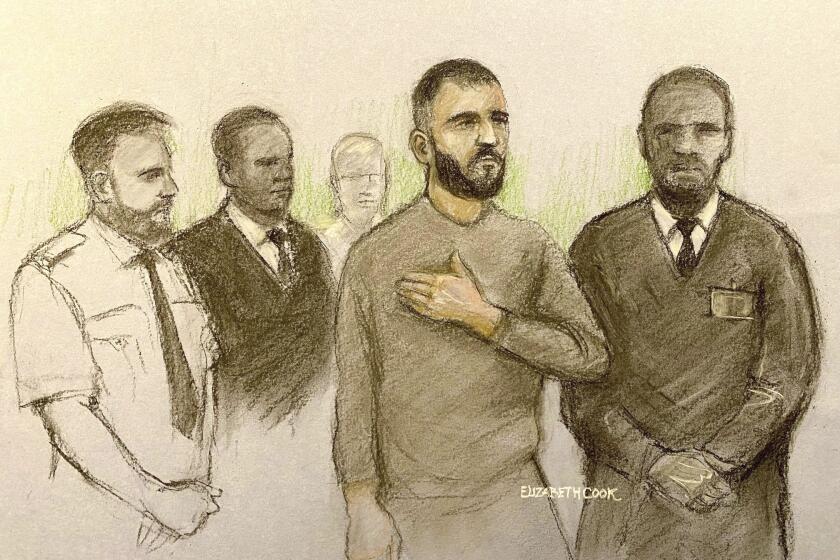Army separates battling demonstrators in Cairo
By Ned Parker and Laura King, Los Angeles Times Staff WritersCAIRO -- Clashes flared for a second day Thursday between opponents and supporters of President Hosni Mubarak, spilling out of the central Cairo square occupied by antigovernment demonstrators and deepening the chaos gripping Egypt.
The army acted decisively for the first time to try to separate the two sides, planting tanks and soldiers in the no-man’s land between what have become enemy lines. In the early afternoon, as helicopters circled overhead, the fighting was scattered and less intense than the previous day.
Confrontations were confined mainly to the periphery of Tahrir Square and the backstreets of the adjoining district, with relative calm in much the sprawling plaza itself. But a potentially larger confrontation loomed Friday, the main prayer day of the Muslim week, when protest organizers have called for a redoubling of efforts to force Mubarak to step aside.
As international pressure mounted for a swift political transition, the newly appointed prime minister, Ahmed Shafiq, called the storming of the square a day earlier by pro-Mubarak partisans a “fatal error” and pledged to investigate who had masterminded it.
Wednesday’s onslaught, which left at least five people dead and hundreds injured, produced surreal scenes, most notably a horse-and-camel charge by the attackers. The two sides battled for hours with crude weapons _ sticks, stones, bottles, cudgels _ fighting that escalated after dark into gunfire and firebombs aimed at the square’s defenders.
The government has denied fomenting the violence and distanced itself from the storming of the square. But organizers of what had heretofore been peaceful protesters in the square say the assailants _ who staged wave after wave of well-coordinated attacks _ were acting at the behest of the 82-year-old Egyptian leader, and that their ranks included plainclothes police and criminals sprung from jail for that purpose.
On Thursday, the principal flashpoint remained a contested stretch near the world-famous Egyptian Museum, which abuts Tahrir _Liberation _Square. Pro-Mubarak forces roamed freely in other downtown areas. One group of men was seen confiscating food and water apparently meant for the square’s defenders.
Protest organizers said they had detained dozens of pro-Mubarak attackers, placing them in a makeshift holding area before periodically handing them over to the army. But rough justice was sometimes dispensed on the spot for suspected provocateurs.
“I’m one of you!” a panicked man cried out in protest as he was seized by a crowd of antigovernment demonstrators, who set upon him with fists and sticks.
Foreigners, and foreign journalists in particular, were menaced by roving groups of pro-Mubarak forces, with a number of reporters roughed up. At impromptu checkpoints, pedestrians and motorists were ordered to produce identification _ a token of the vigilante system that has taken hold across the city.
In incongruous scenes, some protesters in the square prostrated themselves in prayer while a hail of rocks fell nearby. On the square’s fringes, men smashed railings to make metal clubs. Some people wore motorcycle helmets, or swaddled their heads in blankets.
“Yesterday was a slaughter,” said Mahmoud Mustafa Mohammad, who helped defend the square. “I will not leave Tahrir. I will be here until Mubarak leaves, or I die.”
Staff writer Edmund Sanders and Timothy Phelps contributed to this report from Cairo.
More to Read
Start your day right
Sign up for Essential California for news, features and recommendations from the L.A. Times and beyond in your inbox six days a week.
You may occasionally receive promotional content from the Los Angeles Times.






